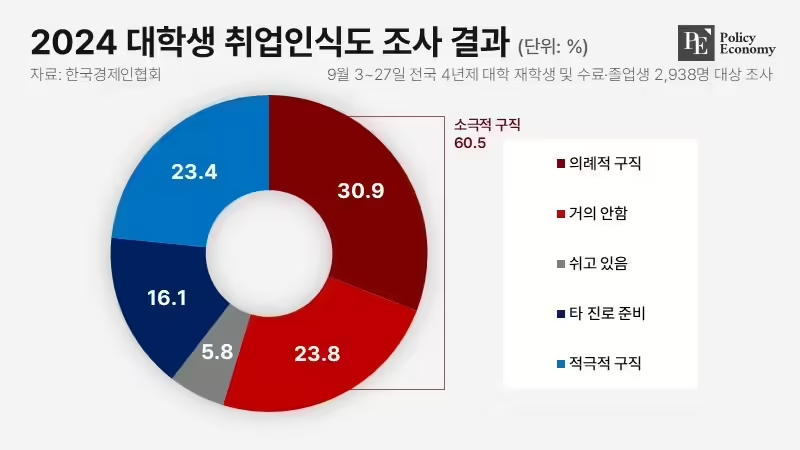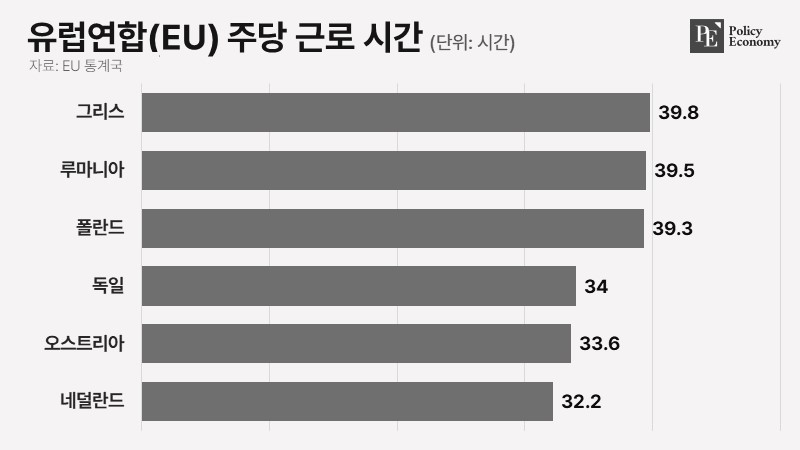[동아시아포럼] 일본 정부, 상장기업 여성 임원 비율 30% 목표
日정부, 2030년까지 ‘여성 임원 비율 30%’ 목표 제시 일-가정 양립 위해 정부와 기업이 책임감 가져야 보수 성향 정치인도 양성평등 장애 요인
[동아시아포럼]은 EAST ASIA FORUM에서 전하는 동아시아 정책 동향을 담았습니다. EAST ASIA FORUM은 오스트레일리아 국립대학교(Australia National University) 크로퍼드 공공정책대학(Crawford School of Public Policy) 산하의 공공정책과 관련된 정치, 경제, 비즈니스, 법률, 안보, 국제관계에 대한 연구·분석 플랫폼입니다.
고이즈미 준이치로 정권 시절이던 2003년, 당시 일본 정부는 2020년까지 사회 전 분야에서 여성 임원 비율을 30% 이상으로 확대하겠다고 공언했다. ‘여성 활약’을 내건 해당 정책은 2014년 아베 신조 정부에 의해 국제사회에 공표됐다.
그러나 통계에 따르면 일본 주요 상장기업의 여성 임원 비율은 2020년 10.7%, 2022년 7월 기준 11.4%에 그쳤다. 이는 프랑스 45.2%, 영국 37.2%, 미국 31.3%에 비해 현저히 낮은 수준이다. 일본이 여성 임원 비율 30% 목표를 달성하기 위해서는 아직 갈 길이 멀다는 의미다.

일본 기시다 내각, 주요 상장기업 여성 임원 비율 확대
지난 4월 기시다 후미오 총리는 관계 장관들에게 포괄적이고 다양한 기업 문화 조성을 위해 구체적인 방안을 마련하도록 지시했다. 이어 6월 13일에는 여성 참여와 양성 평등을 촉진하기 위한 주요 정책을 발표하면서 2030년까지 일본 주요 상장기업의 여성 임원 비율을 30% 이상 확대한다는 목표를 제시했다. 지난 정권의 정책을 그대로 계승한 것이다. 발표 당시 일본 정부는 “주요 기업의 여성 임원 비율이 다른 나라에 비해 현저히 낮은 수준”이라고 지적하면서 “여성 임원의 증가는 미래 경제 성장에 있어 매우 중요한 문제”라고 강조했다.
일본 정부가 발표한 목표치는 도쿄증권거래소에 상장된 대기업만을 대상으로 하는데, 문제는 이들이 일본 전체 노동 인구의 4%에 불과하다는 점이다. 대부분의 여성 근로자들은 남성에 비해 낮은 급여를 받으며 일과 가정 사이의 균형을 유지하는 데 어려움을 겪고 있다. 이를 개선하기 위해 일본 정부는 △여성 기업가 육성 △유연근무제 도입 △남녀 간 임금 격차 해소 등을 포함한 여러 대책을 추진하고 있지만 강제성이 없는 탓에 실행에 한계가 있다는 목소리도 나온다.
일본 사회에서 남녀 간 격차는 여성 임원 비율을 넘어 사회 전반에서 매우 광범위하게 나타난다. 많은 2030세대 여성이 출산 및 육아로 인해 경력이 일시 중단되는 경험을 한다는 것이 단적인 예다. 같은 시기 지속적으로 커리어를 쌓은 남성들과 격차가 발생하는 만큼 여성들이 임원에 오르기가 더욱 어려워진다. 이같은 장벽을 극복하기 위해 일부 일본 기업들은 워라밸(Work-life Balance·일과 삶의 균형) 실현을 위한 단축 근무 및 인센트브제 도입을 고려하고 있는 것으로 알려졌다.
능력 있는 여성의 사회 진출은 미래 노동력 확보 위해 필수적
일본 경제단체연합회(Keidanren)는 남녀 간 격차를 줄이는 것이 경제면에서도 합리적이라고 주장한다. 그러면서 기관 투자자들이 여성 임원이 없는 이사 구성을 반대하고, 기업의 지배구조와 관련해서도 이사회 구성의 다양성과 여성 임원의 임명을 촉구하는 등 상장 기업에 대해 더욱 엄격한 접근을 요구하고 있다.
이같은 경제단체연합회의 기조와 일본의 만성적인 노동력 부족은 일부 보수 성향의 정치인들의 ‘가치 있는 가정’, ‘여성의 가정으로의 회귀’와 같은 비현실적인 주장이 힘을 잃게 했다. 아울러 여성의 사회 진출에 회의적인 입장을 고수했던 보수 성향의 모리 요시로 전 총리가 여성의 일과 육아 병행을 위한 지원에 나서도록 촉구하는 데 일조하기도 했다.
다만 모리 전 총리의 정책들은 여성의 사회 진출을 촉진하기 위함이라기보다는 역량 있는 노동력을 확보해 미래에 대비하기 위한 전략으로 볼 수 있다. ‘가치 있는 가정’을 강조해 온 자민당의 일부 의원들이 여성의 고용 촉진을 주장하는 것도 같은 맥락이다.
많은 자민당 의원들이 여성 노동력에 대한 사회적 변화에 적응한 것은 사실이지만, 그렇다고 가치 있는 가정에 대한 이들의 신념이 바뀐 것은 아니다. 일본 사회에 내재된 묵시적인 규범과 가치관은 여전히 막대한 영향력을 행사하고 있다. 지난해 일본 내각부가 발표한 설문조사 결과를 보면, 응답자의 33.5%가 ‘남편은 밖에서 일하고 아내는 가사를 돌봐야 한다’는 주장에 동의한 것으로 나타났다.
양성평등 문제 해결 위해선 정부 차원의 의지 보여줘야
일본 정부는 남녀 격차를 줄이기 위한 정책에 강력한 드라이브를 걸었지만, 실효성에 대한 의문은 여전히 남는다. 지난 2015년 8월 28일 특별법으로 제정된 ‘여성의 사회 참여 촉진에 관한 법률’에는 중앙정부와 지방정부, 대기업들이 여성의 참여를 촉진하기 위한 기본계획을 수립하고 관련 정보를 공개하도록 규정한 내용이 담겨 있다.
여성의 사회 참여 촉진 정책이 목표를 달성하기 위해서는 정부와 기업 등 실행 주체들의 자발적인 참여와 책무감이 우선돼야 한다. 현재 기시다 내각은 여성 인권 증진과 관련해 정부 차원의 노력과 정책적 성과가 미흡하다는 비판에 직면해 있다. 기시다 총리는 이날 여성 임원 비율 30% 목표를 공언하면서 “지속 가능한 사회를 실현하기 위해선 다양성이 존중돼야 한다”며 “유능한 여성이 적극적으로 사회에 진출할 수 있는 유연한 환경을 조성해야 한다”고 강조했다.
일본 정부와 기업들이 경제 변화에 대응하는 과정에서 여성 노동력에 대한 인식 변화가 있었지만 여전히 여성의 사회 진출은 부차적인 관심사로 취급되고 있다. 자민당의 보수적인 기조들도 양성평등에 대한 사회적인 진전을 가로막는 장애물이다. 일본 정부가 양성평등에 대한 문제 해결에 있어 진정한 의지를 보여줘야 할 시점이다.
Aiming to increase women’s leadership in corporate Japan
In 2003 Japan set a goal of achieving 30 percent representation of women in leadership positions in all areas of society by 2020. This target, known as ‘2020–30’, was set by the administration of former prime minister Junichiro Koizumi and was pledged internationally by former prime minister Shinzo Abe in 2014.

According to Cabinet Office data, the percentage of female executives in Japan’s prime market-listed companies was 10.7 percent in 2020 and remained at just 11.4 percent as of July 2022. This was far lower than France (45.2 percent), the United Kingdom (37.2 percent) and the United States (31.3 percent). There is still a long way to go for Japan to achieve its goal of 30 percent of women in leadership positions.
In April 2023, Prime Minister Fumio Kishida instructed relevant ministers to consider specific measures for fostering a more inclusive and diverse corporate landscape. On 13 June, the government issued the Key Policy for Promoting Women’s Participation and Gender Equality, which sets the goal of ‘achieving a female executive ratio of 30 percent or more in Japan’s prime market-listed companies by 2030’.
The Key Policy points out that the appointment of women as executives in Japanese major firms has continued to ‘significantly lag behind internationally’, stressing that ‘increasing the number of female board members is an urgent issue for the future growth of the Japanese economy’.
The gender disparity in Japan extends beyond the percentage of executives who are female. Many women experience periods of leave in their late twenties and thirties due to maternity or childcare leave. During this time, their careers temporarily come to a halt. As a result, a disparity in career progression arises between them and male employees who continue working steadily, making it difficult for them to reach managerial positions. To overcome these barriers, some Japanese companies are considering implementing mechanisms to improve work-life balance.
The goal number of female executives outlined in the Key Policy only targets major companies listed on the Tokyo Stock Exchange’s prime market, which employ just 4 percent of Japan’s total workforce. Most working women in Japan face challenges in balancing work and family and are paid less than their male counterparts. In acknowledgment of the barriers facing women in the workforce, the Key Policy proposes actions including the promotion of female entrepreneurs, flexible working arrangements and the closing of the wage gap. But the new goals are voluntary and without penalties.
The Japan Business Federation (Keidanren) now acknowledges that narrowing the gender gap is economically rational. Institutional investors are increasingly taking a stricter approach toward listed companies, with actions such as opposing director appointment proposals with no female executives. Corporate governance codes also call for diversification in board composition and the appointment of female executives.
Japan’s chronic labour shortages and the recognition by the Keidanren of the economic rationality of narrowing the gender gap mean that arguments that focus on the so-called ‘value of family’ and ‘returning women to the home’ favoured by conservative politicians are increasingly unviable. Even former prime minister Yoshiro Mori, known for his conservatism and lack of enthusiasm for women’s social advancement, shows a strong interest in ‘supporting both work and child-rearing’.
But his support for such measures is motivated less by promoting women’s social advancement and more by an interest in ensuring a future-ready workforce. Even conservative members of the Liberal Democratic Party (LDP) who emphasise ‘the value of family’ find themselves in a situation where they must accept or even promote women’s employment.
Many LDP lawmakers have agreed to adapt to rapid social transformations, but they have not altered their beliefs about family values. These unwritten norms and values have had a lasting impact. According to the Cabinet Office’s 2022 survey, 33.5 percent of the adult population still agreed with the statement ‘the husband should work outside while the wife should take care of the household’.
While the Key Policy provides policy objectives and general policy directions, the question that remains to be answered is how effective these initiatives will be. On 28 August 2015, temporary legislation was enacted for a period of 10 years. The Law on Promotion of Women’s Active Participation in the Workplace obligates the national government, local governments and certain large companies to establish basic policies and action plans for promoting women’s participation and to disclose related information.
Promoting the new goals created in the Key Policy will involve a voluntary commitment wherein individual companies assume greater responsibility for their own regulatory compliance. The Kishida cabinet’s current initiatives for women’s empowerment have been criticised for their lack of enforcement power and effectiveness.
Prime Minister Kishida has emphasised his desire to ‘realise a sustainable society where everyone feels fulfilment and diversity is respected’. An essential piece of infrastructure necessary to achieve this goal is a flexible environment where capable women can actively contribute. Advancing gender equality and ensuring diversity in decision-making will lead to the realisation of a society where abilities can be demonstrated regardless of gender.
Japan’s corporatist governing bodies continue to make gender-related adaptations to achieve economic transformation, but women’s advancement is a secondary concern at best. The LDP’s conservative beliefs, driven primarily by economic necessity, are likely to slow the pace of progress towards gender equality. Japan’s true commitment to resolving gender disparities deserves to be questioned.
원문의 저자인 야스오 타카오(Yasuo Takao)는 컬틴대학 미디어예술·사회조사 학부(The School of Media, Creative Arts and Social Inquiry at Curtin University) 수석연구원입니다.




























